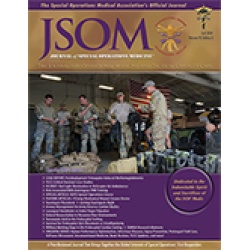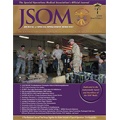United States Military Parachute Injuries. Part 1: Early Airborne History and Secular Trends in Injury Incidence
Knapik JJ 19(3). 110 - 115 (Journal Article)
This article traces the early history of military airborne operations and examines studies that have provided overall incidences of parachute-related injuries over time. The first US combat parachute assault was proposed during World War I, but the war ended before the operation could be conducted. Experimental jumps were conducted near San Antonio, Texas, in 1928 and 1929, but it was not until 1939, spurred by the developments in Germany, that the US Army Chief of Infantry proposed the development of an "air infantry." An Airborne Test Platoon was instituted with 48 men at Fort Benning, Georgia, and mass training of paratroopers began in 1940. The US entered World War II in December 1941 with the attack on Pearl Harbor and declaration of war by Germany. In January 1942, US War Department directed that four parachute regiments be formed. The 509th Parachute Infantry Battalion made the first US Army combat jumps into Morocco and Algeria in November 1942. At the US Army Airborne School in the 1940-1941 period, the parachute-related injury incidence was 27 injuries/1000 jumps; by 1993 it was 10 injuries/1000 jumps and in 2005-2006, 6 injuries/1000 jumps. Analysis of time-loss injuries in operational units showed a decline in injuries from 6 injuries/1000 jumps to 3 injuries/1000 jumps to 1 injury/1000 jumps in the periods 1946-1949, 1956-1962, and 1962-1963, respectively. When all injuries (not just time-loss) experienced in operational units are considered, the overall injury incidence was about 8 injuries/1000 jumps in the 1993- 2013 period. In jump operations involving a larger number of risk factors (e.g., high winds, combat loads, rough drop zones) injury incidences was considerably higher. The few studies that have reported on parachute-related injuries in combat operations suggest injury incidence ranged from 19 to 401 injuries/ 1000 jumps, likely because of the number of known injury risk factors present during these jumps. Despite the limitations of this analysis stemming from different injury definitions and variable risk factors, the data strongly suggest that military parachute injuries have sharply declined over time. Part 2 of this series will discuss techniques and equipment that have likely improved the safety of parachute operations.


 Español
Español 




